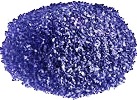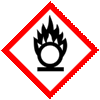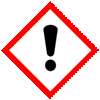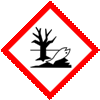Search for the supplies that you need here:
DMF Support and Documentations Available | |
 WHO-GMP Certified Good Manufacturing Practice Certified by World Health Organization |  WC, Written Confirmation for Active Substance to be imported into European Union (EU). |
Potassium Permanganate SDS of Manufacturers Exporters
Anmol Chemicals is a manufacturer supplier exporter of Potassium Permanganate and it offers materials as per IP BP EP Ph Eur USP NF JP FCC Food Grade as per the the latest monograph at best prices. Anmol Chemicals Group, established in 1976, is the pioneer manufacturer of Specialty Chemicals, Pharmaceutical Excipients, Some API, Food Chemicals in India. Anmol Chemicals Group has manufacturing facilities spread across Western India, representatives in Houston, Chicago USA and Dubai, UAE. We also have toll manufacturing units for processing chemicals in a few countries around the world. We make IP, BP, EP, USP, NF, Ph. Eur., JP, FCC or Food Grade, Analytical Reagent Grade, LR or Laboratory Reagent Grades and Pure Grades of various chemicals. All our items are analyzed to meet the required standards. We can supply the product in grams for your laboratory trial and in tons for your plant scale jobs.
We manufacture Bulk Drugs / API, Excipients, Pharmaceuticals (IP BP USP NF Ph Eur EP JP), Specialty Chemicals (Pure/Reagent), Mineral Fortifiers (FCC). Our manufacturing facility is FDA approved and GLP, cGMP, ISO9001, ISO14001, ISO/IEC 17025, ISO22000, FSSC 22000, ISO45001, FSSAI, Kosher, HALAL, COPP, WHO-GMP certified and Written Confirmation (WC) is available. Solid materials can be customized for particle size, shape, and bulk density. We observe WHO Good Manufacturing Practices and Good Laboratory Practices. We are a government-recognized STAR Export House and "Authorised Economic Operator (AEO)" per Indian Customs.
All technical documents and DMF support available.
Potassium Permanganate Specifications of Manufacturers

Potassium Permanganate SDS GHS, Safety Data Sheet
MSDS Sheet, Material Safety Data Sheet
1. PRODUCT DESCRIPTION
Product Name & Other Names: Potassium Permanganate; Permanganic acid, potassium salt
CAS Number: 7722-64-7
EINECS EC Number: 231-760-3
Formula: KMnO4
Molecular Weight: 158.03
Relevant uses and uses advised against (if any): Industrial Manufacturing.
Suppliers: As per letterhead.
2. HAZARD IDENTIFICATION
GHS, Globally Harmonized System Classification in accordance with 29 CFR 1910
Classification according to Regulation (EC) No 1272/2008
Oxidizing solids Category 2, H272
Acute toxicity, oral Category 4, H302
Acute toxicity, dermal Category 4, H312
Skin corrosion Category 1C, H314
Hazardous to the aquatic environment, acute hazard Category 1, H400
Labeling according GHS & Regulation (EC) No 1272/2008
GHS Label Elements  Oxidizing Solid | GHS Label Elements  Irritant | GHS Label Elements  Aquatic Toxicity |
Signal Word: Danger
Hazard Statements:
H272: May intensify fire; oxidizer.
H302: Harmful if swallowed.
H312: Harmful in contact with skin.
H314: Causes serious skin burns and eye damage.
H400: Very toxic to aquatic life.
Precautionary Statements:
P210: Keep away from heat/sparks/open flames/hot surfaces. - No smoking.
P220: Keep/Store away from clothing/other combustible materials.
P221: Take any precaution to avoid mixing with combustibles.
P260: Do not breathe dust/fume/gas/mist/vapors/spray.
P264: Wash ... thoroughly after handling.
P270: Do not eat, drink or smoke when using this product.
P280: Wear protective gloves/protective clothing/eye protection/face protection.
P273: Avoid release to the environment.
P280-Wear protective gloves/protective clothing/eye protection/face protection.
P302+352: IF ON SKIN: Wash with soap and water.
P305+P351+P338: IF IN EYES: Rinse cautiously with water for several minutes. Remove contact lenses, if present and easy to do. Continue rinsing.
P314: Get Medical advice/attention if you feel unwell.
P362: IF SWALLOWED: Call a POISON CENTER or doctor/physician if you feel unwell.
P337+P313 If eye irritation persists: Get medical advice/ attention.
P370+378: In case of fire: Use dry chemical, CO2 or appropriate foam for extinction.
P391: Collect spillage.
P501: Dispose of contents/container in accordance with local/regional/national/international regulations.
Classification according to EU Directives 67/548/EEC or 1999/45/EC:
Hazard Symbols:
O Oxidizing, R 8
Xn Harmful, R22
C Corrosive R34, R41
N Dangerous for the environment, R50/53
Risk Phrases:
R8 = Contact with combustible material may cause fire.
R22 = Harmful if swallowed.
R34 = Causes burns.
R41 = Risk of serious damage to eyes
R50/53 = Very toxic to aquatic organisms, may cause long-term adverse effects in the aquatic environment.
3. COMPOSITION/INFORMATION ON INGREDIENTS
Product Name & Other Names: Potassium Permanganate; Permanganic acid, potassium salt
CAS No.: 7722-64-7
EINECS EC Number: 231-760-3
4. FIRST AID MEASURES
Emergency and First Aid Procedures:
Eyes - Immediately flush eyes with plenty of water for at least 15 minutes, lifting lower and upper eyelids occasionally. Get medical attention immediately.
Skin - Thoroughly wash exposed area for at least 15 minutes. Remove contaminated clothing. Launder contaminated clothing before reuse. Get medical attention at once.
Ingestion - If Potassium permanganate is swallowed, DO NOT INDUCE VOMITING. Give large quantities of water. Never give anything by mouth to an unconscious person. Get medical attention immediately.
Inhalation - Remove to fresh air. Give oxygen if breathing is difficult; give artificial respiration if breathing has stopped. Keep person warm, quiet and get medical attention at once.
5. FIREFIGHTING PROCEDURES
Extinguisher Media: Use dry chemical, CO2 or appropriate foam.
Auto ignition Temperature: N/A
Special Firefighting Procedures: Firefighters should wear full protective equipment and NIOSH approved self-contained breathing apparatus.
Unusual Fire and Explosion Hazards: Potassium permanganate is strong oxidizer. Contact with combustible materials, flammable materials or powdered metals can cause fire or explosion.
6. SPILL OR LEAK PROCEDURES
Personal precautions, protective equipment and emergency procedures: Ventilate area of spill. Clean-up personnel should wear proper protective equipment. Avoid creating dust. Sweep or scoop up and containerize for disposal. Avoid breathing dust/fumes/gas/mist/vapors/spray. Use individual protective equipment (waterproof boots, suitable protective clothing, safety glasses, etc.). Restrict unprotected personnel from the area. Prevent any contact with hot surfaces. Do not approach facing the wind. Do not touch the spilled material.
Environmental precautions: Do not let the product enter drains, soil or water sources.
Methods and materials used for containment Cleanup procedures and Storage: Contain spilled material. Cover with an inert, non-combustible absorbent material, (e.g. sand, earth, diatomaceous earth, vermiculite). Vacuum or sweep-up and remove to an approved disposal container.
7. SPECIAL PRECAUTIONS
Precautions for safe handling: Apply according to good manufacturing and industrial hygiene practices. Ensure proper ventilation. Wash thoroughly after handling. Do not drink, eat or smoke while handling. Avoid contact with skin, eyes and clothing. Minimize dust generation. Avoid breathing dust/fumes/gas/mist/vapors/spray. Avoid contact with eyes, skin, and clothing. Keep container tightly closed. Avoid ingestion and inhalation. Use individual protective equipment (waterproof boots, suitable protective clothing, safety glasses, etc.). Prevent any contact with hot surfaces.
Conditions for safe storage, including any incompatibilities: Store in cool, dry and ventilated area away from heat sources and protected from sunlight in tightly closed original container. Keep air contact to a minimum. Do not leave the material container open. Store protected from heat, sparks and ignition sources and incompatible materials. Avoid contact with skin and eyes. Avoid inhalation of dust/mist/vapor. Do not store with incompatible materials like organic materials, combustible materials, strong reducing agents, strong acids, peroxides, alcohols, chemically active metals, flammable and combustible materials.
8. SPECIAL PROTECTION INFORMATION
Appropriate engineering controls: Handle in accordance with good industrial hygiene and safety practice. Wash hands before breaks and at the end of workday. Emergency eye wash fountains and safety showers should be available in the immediate vicinity of any potential exposure. Ensure adequate ventilation.
Respiratory Protection (Specify Type): None needed under normal conditions of use with adequate ventilation.
NIOSH approved equipment should be worn if PELs are exceeded.
Ventilation: Local Exhaust: Yes
Mechanical (General): Yes
Special: No
Protective Gloves: Rubber, neoprene, PVC, or equivalent.
Eye Protection: Splash proof chemical safety goggles should be worn at all times.
Other Protective Clothing or Equipment: Lab apron, eye wash, and safety shower.
Exposure Limits:
Chemical Name: Manganese and inorganic compounds, as Mn
ACGIH (TLV): TWA: 0.2 mg/m3(A4)
OSHA (PEL): STEL: C 5 mg/m3
NIOSH (REL): TWA: 1 mg/m3 / STEL: 3 mg/m3.
9. PHYSICAL DATA
Appearance: Dark purple to bronze crystals.
Odor: Odorless.
Odor threshold: Not available.
pH: Not available.
Relative density: 2.7
Melting Point: Approximately 240C
Initial boiling point and boiling range: Not available.
Flash point: Not available.
Auto-ignition temperature: Not available.
Decomposition temperature: Not available.
Upper/lower flammability or explosive limits: Not available.
Vapor pressure: Not available.
Vapor density: Not available.
Evaporation rate: Not available.
Flammability (solid, gas): Not available.
Partition coefficient: n-octanol/water: Not available.
Solubility in Water: Moderate
Viscosity: Not available.
Formula: KMnO4
Molecular Weight: 158.03
10. REACTIVITY DATA
Stability: Stable under ordinary conditions of use and storage.
Conditions to Avoid: Heat
Incompatibility (Materials to Avoid): Organic materials, combustible materials, strong reducing agents, strong acids, peroxides, alcohols, chemically active metals.
Hazardous Decomposition Products: None
Hazardous Polymerization: Will not occur.
11. TOXICITY DATA
Toxicity Data: Oral Rat LD50: 750 mg/kg
Carcinogenicity: This substance has no evidence of carcinogenic properties.
Mutagenic Effects: Not available.
Developmental Toxicity: Not available.
Reproductive Effects: No information available.
12. ECOLOGICAL DATA
AQUATIC TOXICITY
LC 50 (Rainbow trout, donaldson trout (Oncorhynchus mykiss), 96 h): 0.267 - 0.442 mg/l Mortality
LC 50 (Striped bass (Morone saxatilis), 96 h): 0.348 mg/l Mortality
LC 50 (Bluegill (Lepomis macrochirus), 96 h): 0.713 - 0.959 mg/l Mortality
Toxicity to fish, Gambusia affinis (fish, fresh water), LC100 = 18 mg/L/24 hours
Toxicity to daphnia and other aquatic invertebrates: Daphnia magna (Crustacea), EC0 = >0.63 mg/L
Toxicity to algae: Anabaena sp. (Algae), EC50 = <0.5 mg/L/18 days/growth rate
Results of PBT and vPvB assessment: This substance/mixture contains no components considered to be either persistent, bioaccumulative and toxic (PBT), or very persistent and very bioaccumulative (vPvB) at levels of 0.1% or higher.
13. DISPOSAL INFORMATION
Waste Disposal Methods: Dispose in accordance with all applicable regulations.
14. TRANSPORT INFORMATION
USA (Land, DOT) and Canada (TDG) and ADR/RID:
UN Number: UN 1490
Proper Shipping Name: Potassium permanganate
Hazard Class: Oxidizer
Packing Group: II
Division: 5.1
Product packaging containing more than 100 pounds
UN Number: UN 1490
Proper Shipping Name: Potassium permanganate, RQ
Hazard Class: Oxidizer
Packing Group: II
Division: 5.1
Additional Info.: If this product is spilled or leaked into the environment, the CERCLA (40 CFR 302.4) reportable quantity is 100 lbs, and requires National Response Center notification within United States of America.
IATA
UN number: UN 1490
Proper Shipping Name: Potassium permanganate
Transport hazard class(es): 5.1
Marine Pollutant: No
Packing group: II
15. REGULATORY INFORMATION
USA:
SARA Section 302 Extremely Hazardous Substances: None of the chemicals in this product have a TPQ.
SARA Codes CAS # 7722-64-7: acute, flammable.
Section 16 - Additional Information
European Labeling in Accordance with EC Directives:
H272: May intensify fire; oxidizer.
H302: Harmful if swallowed.
H312: Harmful in contact with skin.
H314: Causes serious skin burns and eye damage.
H400: Very toxic to aquatic life.
Classification according to EU Directives 67/548/EEC or 1999/45/EC:
Hazard Symbols:
O Oxidizing, R 8
Xn Harmful, R22
C Corrosive R34, R41
N Dangerous for the environment, R50/53
Risk Phrases:
R8 = Contact with combustible material may cause fire.
R22 = Harmful if swallowed.
R34 = Causes burns.
R41 = Risk of serious damage to eyes
R50/53 = Very toxic to aquatic organisms, may cause long-term adverse effects in the aquatic environment.
DISCLAIMER: The information and recommendations set forth herein are presented in good faith and believed correct as of the date hereof. It is compiled from various sources and it is not necessarily all inclusive nor fully adequate in every circumstance. In addition, these suggestions should not be confused with nor followed in violation of applicable laws, regulations, rules or insurance requirements applicable. This MSDS sheet is intended only as a guide to the appropriate precautionary handling of the material by a properly trained person using this product. Individuals receiving the information must exercise their independent judgment in determining its appropriateness for a particular purpose.



Manufacturer Supplier Exporter
ANMOL CHEMICALS Private Limited
Representatives in Houston, Chicago and New York, USA
TEL: (OFF) +91 22 23726950, +91 22 23774610, +91 22 23723564
Taloja Navi Mumbai, Banglore, INDIA
e-mail: info@anmol.org
Copyright and Usual Disclaimer is Applicable
Last updated 21-oct-25
Exporters to USA, Canada, UAE, Kuwait, Qatar, Gautemala, Tunisia, Europe, South Africa, Bangladesh, Sri Lanka, Tanzania, Kenya, Egypt, Iraq, Turkey, Israel, Vietnam, Nigeria, Uganda, Brazil, Chile, Argentina, Dubai, UAE, Saudi Arabia, Cameroon, Mexico, Brazil, Chile, Argentina, Korea, Thailand, Malaysia, Indonesia, Jakarta, Australia, China, Germany, France, etc.
Representatives in New York, Houston - Texas, Chicago - Illinois, Los Angeles.
All products are Sold for Industrial and Laboratory Use only.
Fast Selling IP BP Ph Eur EP USP NF JP Analytical Reagent FCC Food Grades of Chemicals by Anmol Chemicals
Ammonium Persulfate --- Acetic Acid Glacial --- Aluminum Chloride --- Ammonium bicarbonate --- Benzyl Alcohol --- Butylated Hydroxyanisole --- Butylated Hydroxytoluene --- Boric Acid --- Calcium Butyrate --- Calcium Chloride --- Calcium Hydroxide --- Calcium Lactobionate --- Calcium Saccharate --- Carbamide Peroxide --- Calcium Oxide --- Calcium Sulfate --- Chromic Chloride --- Fumaric Acid --- Magnesium Butyrate --- Magnesium Chloride --- Magnesium Sulfate --- Malic Acid --- Maleic Acid --- Manganese Chloride --- Manganese Sulfate --- Octyldodecanol --- Oleic acid --- Phenylethyl Alcohol --- Propylene Carbonate --- Potassium Hydroxide Pellets --- Potassium Alum --- Selenious Acid --- Sodium Acetate --- Sodium Bromate --- Sodium Selenite --- Sodium Perborate --- Sodium Hydroxide --- Sodium Sulphate --- Sodium Sulfide --- Sodium Thiosulfate --- Urea --- Zinc Chloride --- Zinc Sulphate ---


















